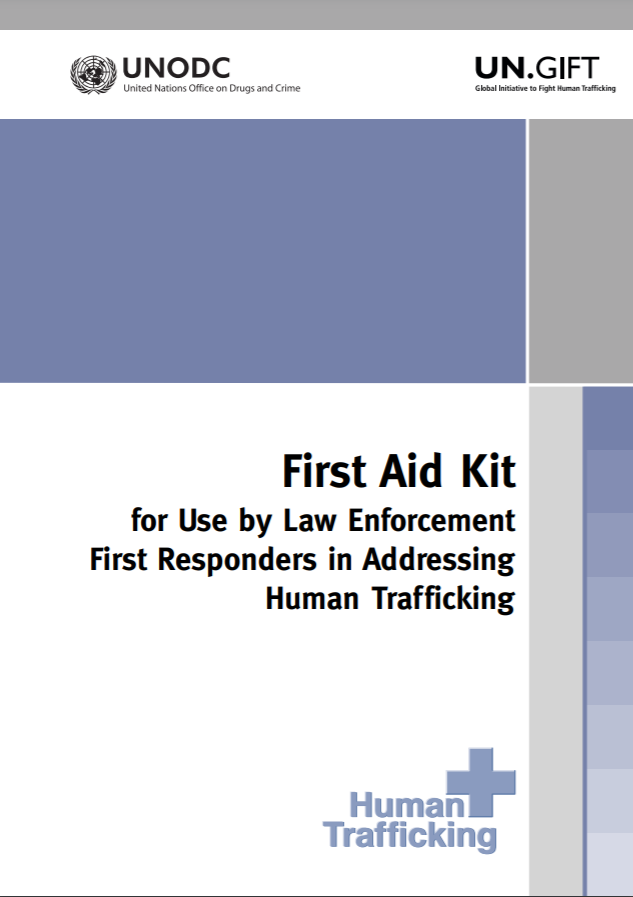First Aid Kit for Use by Law Enforcement First Responders in Addressing Human Trafficking

In a medical context, first aid is the kind of emergency care given to an injured or ill person before treatment by specifically trained medical personnel becomes available. People providing first aid take first steps to identify problems and to stabilize and prepare patients for further treatment by experts.Law enforcement first responders fighting human trafficking carry out similar functions.
They take first steps:
• To identify human trafficking
• To stabilize and control the human trafficking situation
• To prepare victims and pass information on to investigators
Those providing medical first aid need to know how to instantly and temporarily treat injuries and illnesses. Similarly, law enforcement officers providing first aid need to know how to instantly and temporarily deal with crimes and incidents.The kind of emergency treatment that law enforcement officers provide in cases of human trafficking is similar to that provided in other criminal cases, but there are some important aspects specific to human trafficking that officers need to know about. This kit provides the necessary information to allow officers to take the vital first steps to protect the victims and catch the criminals involved.
Country
Worldwide
Region
Worldwide
Year
2009
Topics
Category

